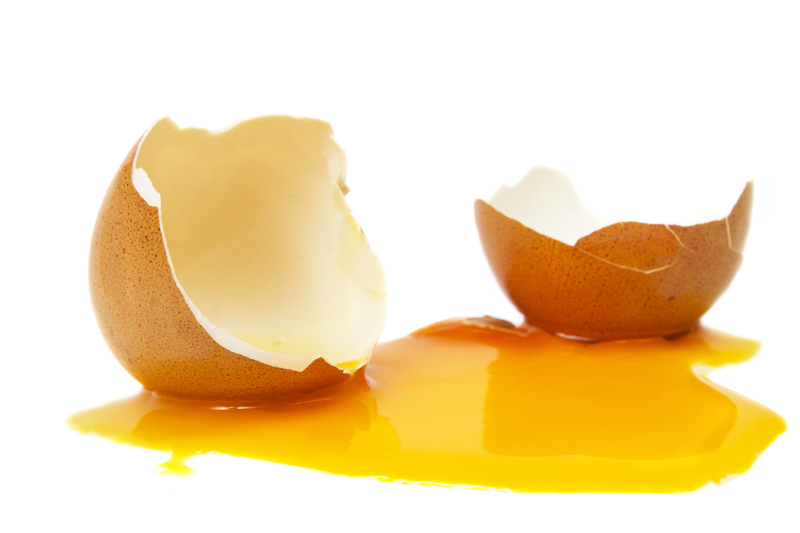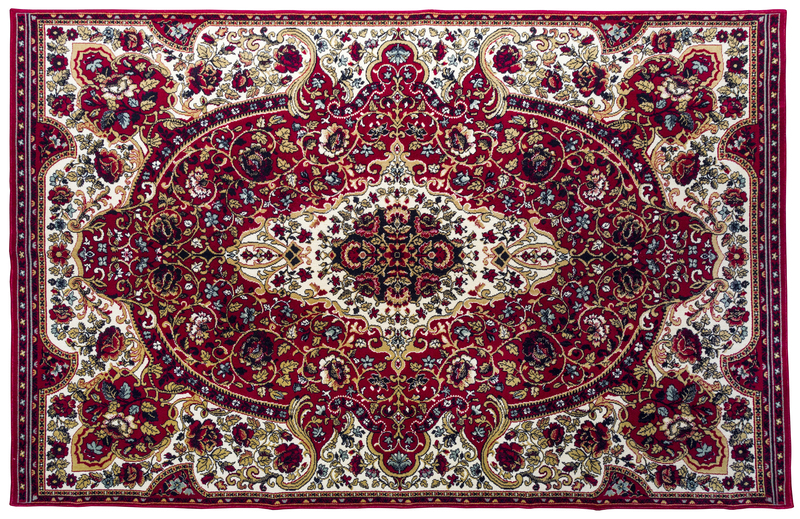Effective Methods to Clean Your uPVC Window Frames
Posted on 01/09/2025
Effective Methods to Clean Your uPVC Window Frames
Keeping your uPVC window frames in pristine condition is essential for maintaining your home's curb appeal, ensuring the longevity of your windows, and keeping them functioning properly. Over time, uPVC frames can accumulate dirt, grime, and even stains, which can be tricky to remove if not tackled correctly. In this comprehensive guide, we will explore the best methods to clean your uPVC window frames, the common mistakes to avoid, and tips to ensure your frames stay spotless for years to come.

Understanding uPVC Window Frames: Why Proper Cleaning Matters
Regular cleaning of your uPVC window frames not only keeps them looking attractive, but also:
- Prevents buildup of mold and mildew
- Helps avoid permanent stains and discoloration
- Ensures smooth operation of hinges and locks
- Extends the lifespan of your windows
If you want your uPVC windows and frames to look new for longer, follow these effective cleaning techniques and maintenance tips.
Preparing for Cleaning: Gather Your Supplies
Before you start scrubbing away at your window frames, make sure you have the right tools. Using the correct cleaning products ensures that you'll get a brilliant result without damaging the
Recommended Cleaning Supplies
- Soft microfiber cloths or non-abrasive sponges
- Mild dish soap or uPVC cleaner
- Bucket of warm water
- Soft-bristled brush (such as a toothbrush for hard-to-reach spots)
- Non-scratch window scraper (if needed)
- White vinegar (for stubborn stains)
- Cream cleaner (for occasional deep cleans)
- Paper towels or lint-free cloths for drying and polishing
Avoid using the following on uPVC frames:
- Scouring pads or steel wool
- Harsh chemical cleaners or bleach
- Abrasive powders or pastes
- Colored cloths that may bleed onto the white frames
Step-by-Step Guide: How to Clean uPVC Window Frames Effectively
Step 1: Remove Surface Dust and Debris
Begin by gently wiping down your uPVC window frames with a dry microfiber cloth to remove loose dust and dirt. Pay extra attention to the corners and edges where debris often collects. If your frames are especially dusty, use a soft-bristled brush or vacuum with a brush attachment to avoid scratching.
Step 2: Prepare a Mild Cleaning Solution
Mix a few drops of mild dish soap or a specialist uPVC frame cleaner into a bucket of warm (not hot) water. Hot water can sometimes warp the uPVC material, so stick to lukewarm for best results.
Step 3: Wash the Frames Thoroughly
- Dip your soft cloth or non-abrasive sponge into the soapy water and wring out excess liquid.
- Gently wipe down the entire frame, paying close attention to dirty spots or marks.
- For stubborn areas, use a soft toothbrush to gently agitate grime in crevices or corners.
- Repeat as needed, ensuring complete removal of dirt and soap residue.
Step 4: Spot-Treat Stubborn Stains
For persistent stains (such as bird droppings, grease or black streaks), consider these targeted cleaning solutions:
- White vinegar solution: Mix equal parts white vinegar and water, apply to a cloth and gently scrub the stained area. Rinse thoroughly with clean water afterward.
- Cream cleaner (non-abrasive): For extra-tough stains, use a non-abrasive cream cleaner approved for use on uPVC. Apply a small amount to a clean sponge, rub gently, and wipe away with a damp cloth.
Note: Avoid letting any cleaning solution sit for too long on the uPVC surface to prevent discoloration.
Step 5: Rinse and Dry
After cleaning, rinse the frames with fresh water to remove any leftover cleaning solution or residue. Then, dry the frames using a clean lint-free cloth or paper towel to avoid streaks and water spots.
Step 6: Polish for a Lasting Shine
If desired, restore extra shine to your frames by buffing with a dry microfiber cloth. There are also specialized uPVC polish sprays available, but always check that they're compatible with your window manufacturer's guidelines.
Special Tips for White uPVC Window Frames
White uPVC frames are a popular choice for their classic, clean look, but they can highlight dirt and discoloration more easily than colored frames. Here are some specific tips for keeping them brilliantly white:
- Clean your frames every 1-2 months, or more often if you live in an area with high pollution or dust.
- Use a commercial uPVC whitening cream for occasional deep cleans. Always follow the product instructions for safe use.
- Avoid abrasive pads or harsh chemicals as these can scuff and yellow the material.
- Regularly polish with a clean microfiber cloth to maintain a glossy finish and minimize buildup.
How to Clean Black or Colored uPVC Window Frames
Dark or colored uPVC window frames can hide some stains but may show marks from limescale or water spots. Here's how to ensure they stay immaculate:
- Avoid vinegar-based cleaners as they may dull colored finishes.
- Always use a color-safe, pH-neutral cleaning solution.
- Buff frames dry with a lint-free cloth after washing to avoid watermarking.
Top Maintenance Tips for Long-Lasting uPVC Frames
Regular Maintenance
- Wipe down your window frames with a damp cloth as part of your weekly cleaning routine.
- Check for signs of mold or mildew and treat with a specialist uPVC mold remover if needed.
- Lubricate window hinges and locks with a silicone-based spray every 6-12 months to ensure smooth operation.
Weatherproofing & Protection
- Inspect the sealant around your uPVC windows and re-seal if there are cracks or signs of wear.
- Install drip edges or awnings if excessive rainwater causes dirt streaks on your window frames.
- Consider applying a protective wax or specialist conditioner annually to repel dirt and reduce staining.
Common Mistakes to Avoid When Cleaning uPVC Window Frames
Even with the best intentions, certain cleaning habits can do more harm than good to your uPVC window frames. Avoid these common pitfalls:
- Using abrasive tools: Scouring pads, steel wool, or hard brushes can scratch and damage the smooth uPVC surface.
- Applying harsh chemicals: Products containing bleach, ammonia, or solvents can degrade uPVC and cause yellowing.
- Leaving soap residue: Failing to rinse properly may lead to streaks and dullness over time.
- Pressure washing too closely: High-powered water jets can disturb the sealant and force water into window joints, risking leaks and mold.
- Neglecting upper or hidden areas: Always check the tops, bottoms, and inside the frame for hidden buildup.
Eco-Friendly and DIY Cleaning Solutions for uPVC Window Frames
For those who prefer to avoid commercial products, there are eco-friendly methods to clean uPVC window frames effectively:
- Baking soda paste: Mix baking soda with a small amount of water to form a paste, apply to stubborn stains, and gently scrub with a soft brush. Rinse well afterward.
- White vinegar solution: As previously mentioned, diluted white vinegar can be highly effective for tackling ingrained dirt and brightening white frames.
- Lemon juice: The acidic properties of lemon juice help cut through grease and grime naturally. Dab a cloth with lemon juice and wipe, then rinse with clean water.
Always spot test any homemade cleaner on an inconspicuous area first.
When to Call in the Professionals
While most homeowners find cleaning uPVC frames easy, some situations may require professional window cleaning services:
- Deep-seated stains or discoloration that household products cannot remove
- Large multi-story homes where safe access is an issue
- Windows with integrated blinds or complex mechanisms
- Preparation for property sale or high-stakes events

FAQ: Cleaning and Caring for uPVC Window Frames
How often should I clean my uPVC window frames?
For most homes, cleaning your uPVC window frames every 1-2 months is sufficient. In rural or high-pollution areas, monthly cleaning may be necessary.
Can I use bleach to clean uPVC window frames?
No. Bleach and other harsh chemicals can damage and discolor uPVC frames. Always use mild detergents or specialist uPVC cleaners.
What should I do if my uPVC window frame turns yellow?
Yellowing can occur due to UV exposure or inappropriate cleaning products. Try a commercial uPVC whitening cleaner or contact a professional if discoloration persists.
Is it safe to use a pressure washer on uPVC window frames?
You can use a pressure washer on low power, but avoid focusing it directly at joints or seals. Keep the nozzle at least 50 cm from the frame to prevent damage.
Conclusion: Enjoy Sparkling Clean uPVC Window Frames Year-Round
Caring for your uPVC window frames is a straightforward task when you use the right materials and techniques. Regular, gentle cleaning will keep your windows looking their best, function smoothly, and last for decades. Whether you have gleaming white or stylish colored frames, stick to these effective cleaning methods and maintenance tips to protect your investment and enhance your home's appearance.
Remember: For the best results when cleaning uPVC window frames, avoid harsh chemicals and abrasives, rinse thoroughly, and dry properly every time. With just a little effort and the information above, you can ensure your uPVC windows remain a beautiful feature of your home for many years to come.





